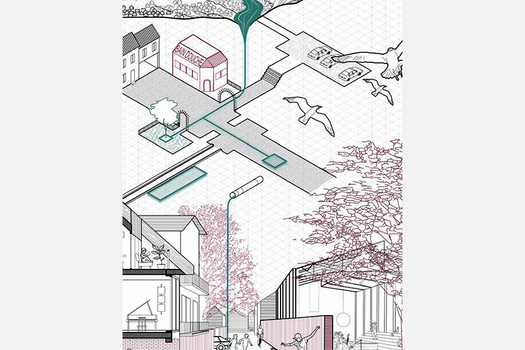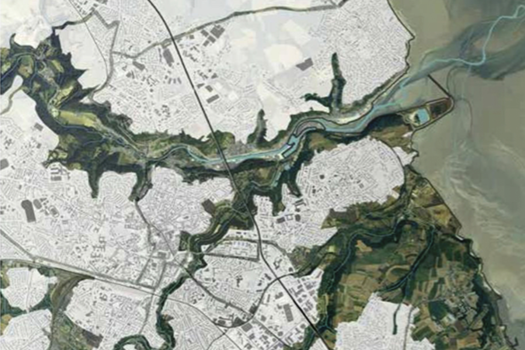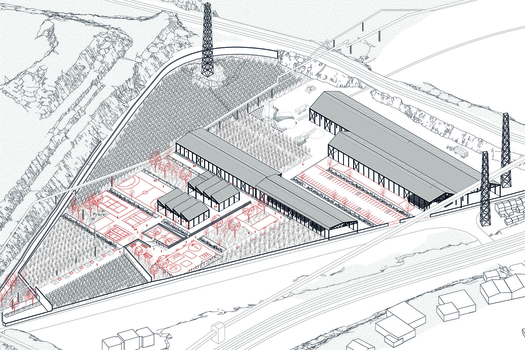Le sol, le roseau et le cycliste
Namur (BE) - Runner-up

TEAM PORTRAIT
VIDEO (by the team)
INTERVIEW
Click on the images to enlarge
1. How did you form the team for the competition?
We met at the DSA of Eavt&t. Coming from two different schools in France, Clermont-Ferrand and Marne-la-Vallée, our approach is complementary and transdisciplinary. Today, one of us works in Paris and the other in Brussels. We share the vision of an architecture of the order of the ordinary, of the everyday, because it is anchored in the existing uses and environments, but which stimulate a part of the imagination.
2. How do you define the main issue of your project, and how did you answer on this session main topic, Living cities?
Today, the former military base of Sart Hulet is seen as a closed and impenetrable place. This isolated area is now home to a unique flora and fauna in the middle of this largely urbanised and agricultural territory. With such open and closed landscapes, this diversity is an opportunity to enrich biodiversity. After the sites were abandoned, a rich fauna and flora naturally and peacefully strove in the area. This biodiversity is an invitation to act humbly. How to offer the people of Namur a pleasant living environment without spoiling the Sart Hulet landscape and disturbing its biodiversity? What urban regulations can we draw from this particular case? And what if the already existing asphalt is key to preserving and revitalising the site?
The project uses three major interdependent actions. Each of which intersects or supports the use of the other. Their interaction creates a thickness that makes it possible to bring about this quality of life; to link the neighbourhoods and landscape entities by adding the missing links, to take care of the landscape, to programme in a complementary way with the neighbouring facilities. The response we are giving is intended to show that the Sart Hulet site is part of a landscape system on the scale of the territory. Actions taken on a local scale have consequences for the whole ecosystem.
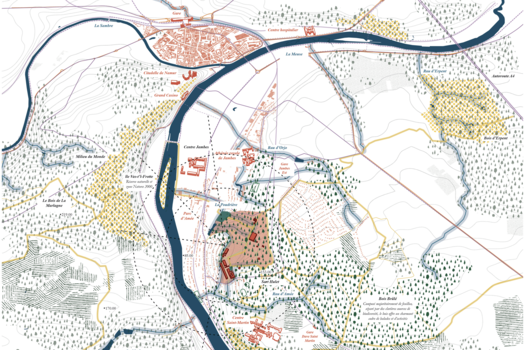
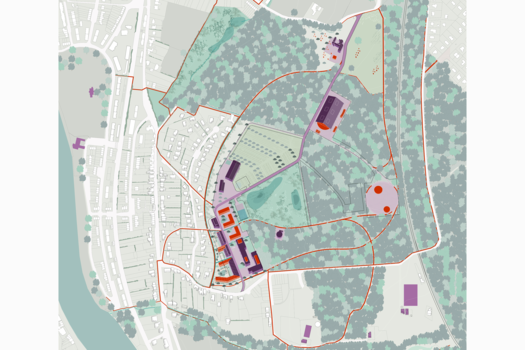
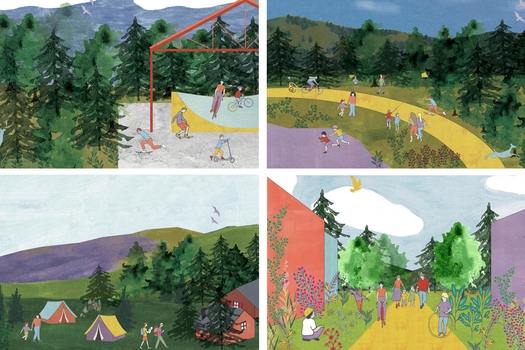
Sensitive to the flooding of the Meuse in the summer of 2021, the question of water is becoming a key contemporary issue. The proposal takes up this issue to activate a range of subjects on all scales. Water must be managed throughout its course. The preservation of permeable soils is the focus of the project. Spaces must be preserved for the benefit of water absorption and biodiversity, providing healthy spaces for the surrounding neighbourhoods. Nevertheless, water management is also a support for programming and economy; it draws paths, the presence of concrete in the forest offers event spaces which are complementary to the activities of the city centre thanks to their proximity. The landscape is no longer the reverse side of the city. Each element has several uses and becomes complementary in this multiscalar vision.
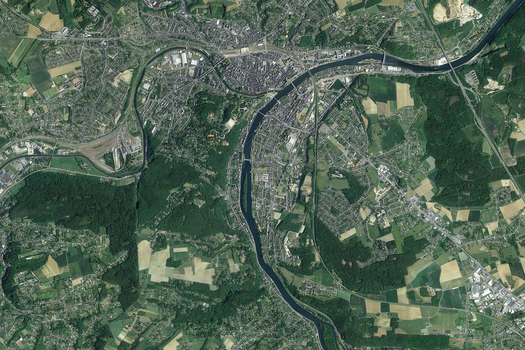
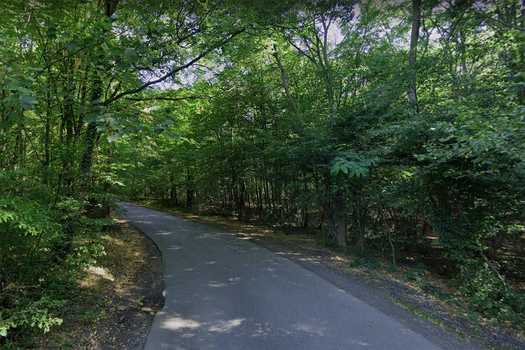
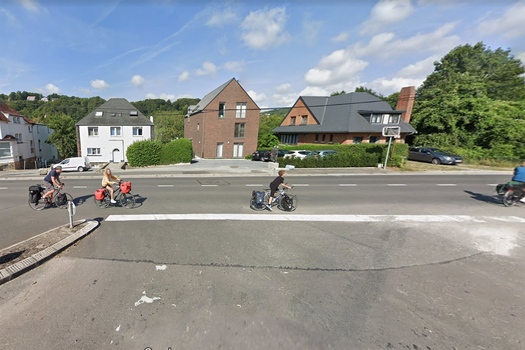
During the DSA, we responded to a commission with this same process of reversing the perception that a city can have of itself. It was about the abandonment of a city centre whose economy depended on the presence of a road that had been moved. Also, following an analysis, we discovered that this town was part of a landscape system forgotten by all, but that historically the economy of the region depended on this valley. Our proposal therefore put the landscape entity of the Besbre Valley back at the centre of the problem. And the presence of water became a project lever to respond to climatic, economic, programmatic and typological issues.
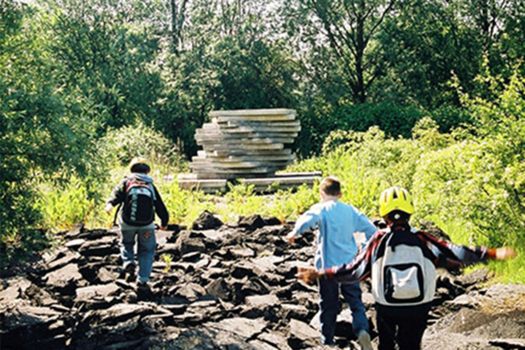
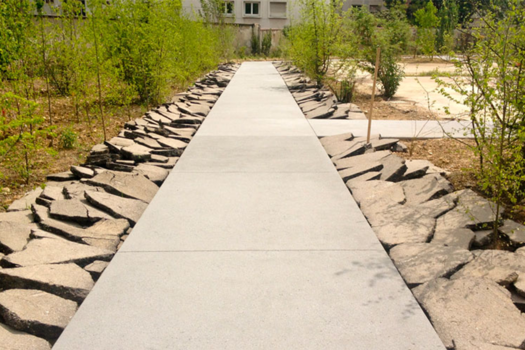
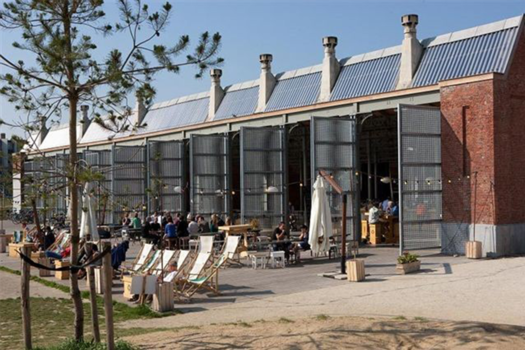
It is obvious that because of the scale of the project and the need to deconstruct, depollute and revitalise, it will take time to complete. It is a project that is carried out by acupuncture with a phasing scheme. The programming of the site and its financing is intended to be done with the actors present on the territory, so it is necessary to build first of all a dialogue together to take note of the needs of each one. Different stages of actions can be carried out in parallel. Soil revitalisation requires few resources, but time. Time that is also useful for building this dialogue between actors.
6. Is it the first time you have been awarded a prize at Europan? How could this help you in your professional career?
Participating in Europan is a first for us. The problematic of the Namur site seemed to us to be particularly captivating both by its specific context and by its symptomatic and characteristic problems of closed and abandoned territories. This competition was exciting. We work between Brussels and Paris and this site was at the crossroads of our reflections on the city-nature. Having a diversified professional practice, this experience allowed us to put our skills and sensibilities to good use. Being finalists makes us enthusiastic and motivated to pursue this reflection together and especially with the actors and inhabitants of Namur.
TEAM IDENTITY
Office: -
Function: architecture, urban planning
Average age of the associates: 27 years old
Has your team, together or separately, already conceived or implemented some projects and/or won any competition? if yes, which ones?
Yes, we have already worked on a project within the framework of the DSA. This was a study on the revitalization of a city center in central France in Lapalisse.
